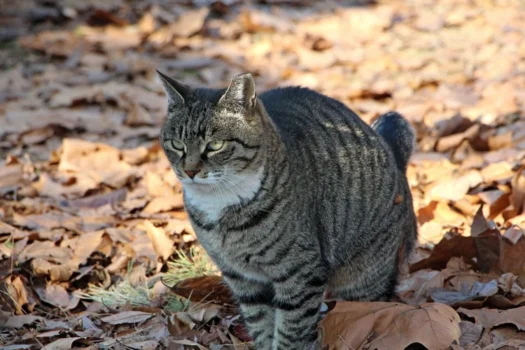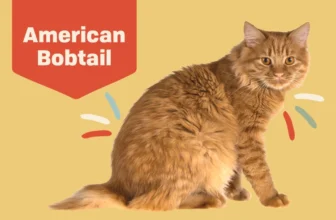As a cat owner, you want your American Bobtail to be well-behaved, healthy, and happy. One effective way to achieve this goal is through positive reinforcement training. But what is positive reinforcement training, and why is it important for American Bobtails? In this article, we’ll dive into the role of positive reinforcement in training American Bobtails, including its benefits and effective techniques that you can use. By the end of this article, you’ll have a better understanding of how to create a strong bond with your feline friend and promote good behavior in a loving and respectful way. So, let’s get started!
Understanding Positive Reinforcement
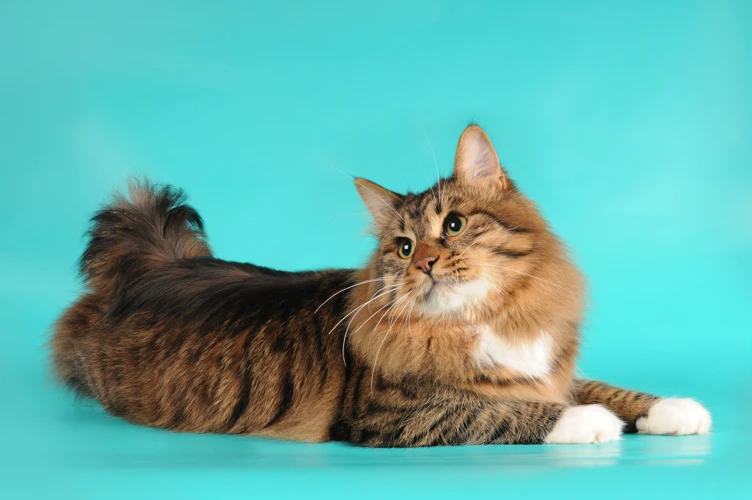
As a cat owner or trainer, it’s important to understand the most effective ways to train your American Bobtail. Positive reinforcement is a popular method among cat owners and trainers for its proven effectiveness. Through positive reinforcement, you can encourage and reinforce good behaviors in your cat while discouraging unwanted behaviors. But what exactly is positive reinforcement, and why is it particularly important for training American Bobtails? Let’s explore this concept further.
What is Positive Reinforcement?
Positive reinforcement is a training method that involves providing a reward or praise to increase the likelihood of a behavior being repeated. This technique is widely used in training American Bobtails because it encourages good behavior without causing any harm or stress. Unlike negative reinforcement, which involves punishing undesirable behavior, positive reinforcement focuses on rewarding desirable behavior.
By using positive reinforcement, owners can encourage their American Bobtails to perform behaviors that they want while reducing the occurrence of unwanted behaviors. Instead of punishing their cat for doing something wrong, owners can reinforce positive actions by rewarding their cat when they do something good. This method helps to create a happy and positive environment that motivates the cat to learn and engage in training.
Owners can use a wide range of rewards when using positive reinforcement, such as treats, verbal praise or affection. The key is to choose a reward that your cat values and is likely to motivate them to perform the desired behavior. As cats are unique and have their own personalities, it’s important to find what works best for your American Bobtail.
Positive reinforcement is based on the principle that behaviors that are once rewarded become more likely to be repeated. This makes it an effective method for owners who want to train their American Bobtails to perform desirable behaviors such as using the litter box or coming when called. However, it’s important to remember that positive reinforcement isn’t a quick fix solution or a replacement for good old-fashioned patience and consistency.
By utilizing positive reinforcement in the training of American Bobtails, owners can create a rewarding and positive environment for their feline friend. This leads to a stronger bond between the owner and the cat, as well as a well-behaved pet that is happy, healthy, and content. If you’re interested in learning more about the trainability of American Bobtails, check out our article about trainability of American Bobtails.
Why is Positive Reinforcement Important for American Bobtails?
One of the most important reasons positive reinforcement is crucial for American Bobtail’s training is because it builds a strong and healthy relationship between the cat and its owner. This technique is based on rewarding desirable behavior and ignoring undesirable one. It is a humane and effective way to teach new skills and build trust with felines.
American Bobtails have a unique personality, and they require training methods tailored specifically to them. According to the study, it is necessary to use a cooperative approach to training for the American Bobtails. Punitive action has been shown to be less effective for Bobtails compared to other breeds. Using positive reinforcement allows for a unique bond between the owner and the American Bobtail to form.
Another reason positive reinforcement is essential for American Bobtails is that it increases their motivation to learn new things. Reinforcing good behavior with rewards, such as treats or praise, makes them more willing to do things correctly next time, even if they don’t feel like it. This is especially important when introducing new concepts or commands, such as litter-box training, trick training or clicker training etc. Redirecting negative behavior towards desirable actions also has a significant impact on their behavior in the future.
Finally, positive reinforcement is important for American Bobtails because it promotes well-being and reduces stress. Receiving treats, verbal praise, and cuddles have been shown to activate the pleasure centers in the cat’s brain, which helps her to feel relaxed and happy. By training your American Bobtail to perform desired actions using positive reinforcement, you help to create an environment where she feels safe and secure. This can lead to a happier and healthier cat, less prone to negative behavior.
In conclusion, positive reinforcement is vital for ensuring the well-being and happiness of American Bobtails, and cat owners should consider using this technique when training their beloved pet. By establishing a healthy relationship based on trust and respect, cat owners can create a harmonious home environment. By understanding the personality and needs of their American Bobtail, cat owners can use positive reinforcement to create a relationship that is mutually rewarding and enjoyable.
Benefits of Positive Reinforcement Training for American Bobtails
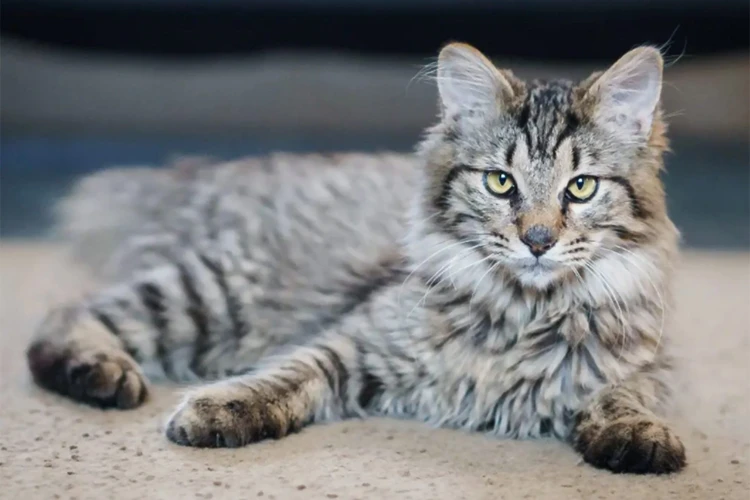
When it comes to training American Bobtails, the benefits of positive reinforcement cannot be overstated. Using positive reinforcement techniques during training can help your cat become well-behaved, confident, and happy. Positive reinforcement techniques focus on rewarding good behavior with treats, playtime, and affection, as opposed to punishing bad behavior. This approach has been proven to be more effective and humane than aversive training methods. Let’s take a closer look at the benefits of positive reinforcement training for American Bobtails.
Builds Trust and Respect
Positive reinforcement builds trust and respect in your American Bobtail. This is because it helps establish a positive relationship between you and your pet. When you reward good behavior with treats, verbal praise, or physical affection, your cat learns to associate your presence with positive experiences.
This creates a sense of security and predictability for your pet, which in turn improves their behavior and training success. As your cat becomes more compliant with training, they will show more trust and respect towards you, and you will feel more connected to them.
By using positive reinforcement techniques in your American Bobtail’s training, you are showing them that you value their good behavior and that you are happy to reward them for it. This creates a positive cycle of behavior, where your pet is more motivated to continue doing what pleases you.
In addition to improving your training results, positive reinforcement builds trust and respect through the interactions you have with your pet on a daily basis. By spending quality time together and being responsive to your cat’s needs, you establish a foundation of trust that strengthens your bond with your pet.
To sum up, positive reinforcement training builds trust and respect between you and your American Bobtail. It establishes a positive association between behavior and reward, and creates a sense of security for your pet. By focusing on rewarding good behavior, your pet becomes more compliant and responsive to your training, which in turn strengthens your bond and deepens your connection.
Increases Confidence and Reduces Fearfulness
Positive reinforcement training is an effective way to increase confidence and reduce fearfulness in American Bobtails. When a cat learns that good behavior is rewarded with treats, playtime, and praise, it starts to feel confident and secure in its abilities.
The following are some ways in which positive reinforcement training can increase confidence and reduce fearfulness in American Bobtails:
- Encourages Exploration: By offering treats and praise for exploring new objects and environments, positive reinforcement training can boost your cat’s confidence and reduce its fear of new things.
- Reduces Separation Anxiety: Cats that are frequently left alone can develop separation anxiety. Positive reinforcement training can help reduce separation anxiety by offering treats and praise for good behavior when you leave and return home.
- Builds Positive Associations: Positive reinforcement training can help your American Bobtail associate positive feelings with things that once frightened them. For example, giving treats and praise during vet visits can reduce your cat’s fear of the veterinarian’s office.
- Fosters Independence: Positive reinforcement training encourages your cat to make decisions and learn at its own pace. This can help your cat feel more confident and independent.
It’s important to note that positive reinforcement training is not a quick fix. It takes time and consistency for your American Bobtail to learn new behaviors and build confidence. But over time, the rewards of positive reinforcement training can be significant.
To learn more about how to train your American Bobtail using positive reinforcement techniques, check out our article “Train Your American Bobtail: Tips and Techniques”.
Improves Learning and Retention
Positive reinforcement is a highly effective training technique for American Bobtails that can improve their learning and retention abilities. Using positive reinforcement techniques such as treats, praise, and playtime can encourage your American Bobtail to learn and retain new behaviors and commands more quickly.
Studies have shown that using positive reinforcement can lead to better learning and retention in animals. In fact, according to one study (source), animals that were trained using positive reinforcement had better retention of the behavior after a month than animals trained with negative reinforcement or punishment.
Positive reinforcement works by rewarding behavior that is desired, rather than punishing behavior that is undesired. This means that when your American Bobtail does something right, you reward them with treats, praise, or affection. Over time, they will learn that performing the desired behavior leads to a positive outcome, which will increase their motivation to learn and retain the behavior.
Using positive reinforcement during training can also help your American Bobtail to associate training sessions with positive experiences. This can help to increase their motivation to learn and make training more enjoyable for both you and your cat.
To improve learning and retention with positive reinforcement, it is important to be consistent and use the same reward each time your American Bobtail performs the desired behavior. This will help them to associate the behavior with the reward and learn more quickly.
Positive reinforcement is a highly effective training technique for American Bobtails that can improve their learning and retention abilities. By using treats, praise, and playtime to reward good behavior, you can encourage your cat to learn and retain new behaviors more quickly and make training a positive experience for both of you.
Maintains Good Behavior Long-Term
Using positive reinforcement techniques for training your American Bobtail not only improves their behavior in the short term, but also maintains good behavior in the long run. When cats are corrected for bad behavior, they may eventually stop the bad behavior, but not necessarily understand what the appropriate behavior is. This may lead to the cat developing new undesirable behaviors in the future.
On the other hand, when you reinforce good behavior through positive reinforcement techniques, your American Bobtail will understand exactly what is expected of them. By consistently rewarding good behavior, your cat will associate that behavior with positive outcomes and continue to exhibit this behavior in the future.
This long-term maintenance of good behavior is especially important for American Bobtails, who are known for their active, adventurous personalities. Regular training sessions using positive reinforcement can help keep them focused and well-behaved.
It is important to note that maintaining good behavior in the long term requires ongoing training and reinforcement. Once your cat has learned a behavior, it is important to continue reinforcing it through occasional rewards and consistent use of the behavior command. This will help ensure that your cat maintains the desired behavior over time.
Positive reinforcement techniques can be used to teach your American Bobtail new behaviors and tricks, keeping their minds and bodies active and engaged. Check out our article on trick training for American Bobtails for more information on this topic.
Positive reinforcement training is a highly effective way to keep your American Bobtail’s behavior in check and ensure they remain happy and well-behaved throughout their lives. For more information on early socialization and training techniques for American Bobtails, check out our article on early socialization and training or read up on how American Bobtails compare to other felines with our breed comparison guide.
Effective Positive Reinforcement Techniques for American Bobtails
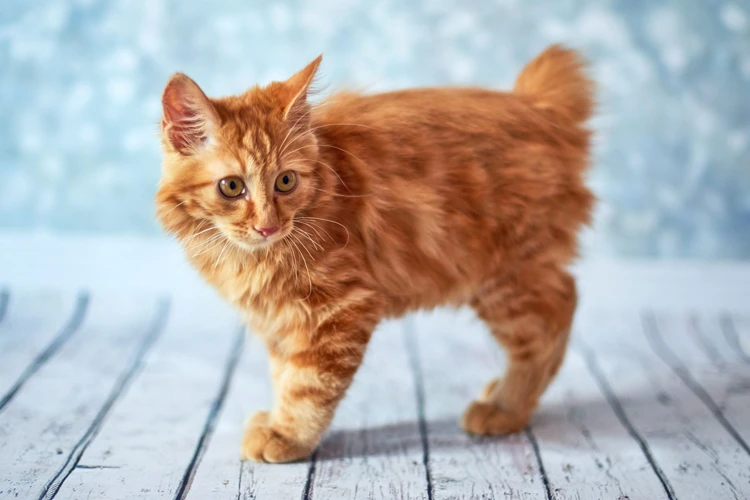
As a devoted owner of an American Bobtail, you want to ensure that your furry companion receives the best training there is. Positive reinforcement techniques are a proven way to train your Bobtail effectively without resorting to negative or forceful methods. Implementing these techniques in your feline’s training requires patience, consistency, and a good understanding of their needs and personalities. Here are some tips to help you train your American Bobtail through positive reinforcement.
Use Treats to Reward Good Behavior
When training your American Bobtail, using treats can be an effective way to reward them for good behavior. However, it is important to choose the right type of treat and use them in a responsible way.
Choose Healthy Treats: It’s important to choose treats that are healthy and don’t contain any harmful ingredients. Avoid treats that are high in sugar, salt or artificial flavors. Instead, look for treats that are made with natural ingredients specifically designed for cats.
Associate the Treats with Positive Behaviors: Cats learn through association, so it’s essential to associate the treats with positive behaviors. For example, if you’re training your American Bobtail to come when called, give them a treat immediately after they come to you. This will reinforce the behavior and encourage them to repeat it in the future.
Use Treats Sparingly: While treats can be a useful tool for training, it’s important to use them sparingly. Giving too many treats can lead to weight gain and other health problems. As a general rule, treats should make up no more than 10% of your cat’s daily calorie intake.
Gradually Reduce Dependence on Treats: As your American Bobtail becomes more proficient in their training, gradually reduce the amount of treats you give them. This will help them to become less reliant on treats and more responsive to verbal praise and physical affection.
Using treats to reward good behavior is a proven training technique for American Bobtails. By choosing healthy treats, associating them with positive behaviors, using them sparingly, and gradually reducing dependence on them, you can build a strong bond with your feline friend and help them learn important behaviors.
Play Games to Encourage Exercise and Mental Stimulation
Keeping your American Bobtail entertained and mentally stimulated is important for their overall well-being. Playing games is not just fun for your cat, but they also offer several benefits such as providing exercise, mental stimulation, and can even help improve their behavior.
Benefits of Playtime:
| Benefit | Description |
|---|---|
| Exercise | Encourages physical activity and movement which helps maintain a healthy weight and prevent obesity. |
| Mental Stimulation | Keeps your cat’s mind active and engaged which can reduce boredom and prevent destructive behavior. |
| Behavioral Improvement | Playing games with your American Bobtail can help improve their behavior by redirecting their energy into positive activities instead of destructive behaviors such as scratching furniture or houseplants. |
Types of Games:
There are several types of games that you can play with your American Bobtail to encourage exercise and mental stimulation. Here are some examples:
| Game | Description |
|---|---|
| Chase and Catch | Roll a toy or ball and encourage your American Bobtail to chase and catch it. This game provides exercise, mental stimulation, and satisfies your cat’s instinct to hunt and catch prey. |
| Puzzle Toys | Provide your American Bobtail with puzzle toys that require them to figure out how to retrieve a treat. This game offers mental stimulation and helps improve cognitive function. |
| Hide and Seek | Hide treats around the house and encourage your American Bobtail to find them. This game offers mental stimulation and satisfies your cat’s instinct to hunt and search for food. |
Warning: Make sure that any toys or objects that you use during playtime are safe and non-toxic to your American Bobtail. Supervise playtime to prevent any accidents or injuries.
Playing games with your American Bobtail is a fun and effective way to encourage exercise, mental stimulation, and improve their behavior. Be sure to mix up the games you play and keep it interesting for your cat to prevent boredom.
Provide Verbal Praise and Physical Affection
One important aspect of positive reinforcement training for American Bobtails is providing verbal praise and physical affection to encourage good behavior. Here are some effective ways to do this:
- Verbal praise: Use a happy and enthusiastic tone of voice when praising your American Bobtail for doing something well. This could be as simple as saying “good job!” or “you’re such a smart cat!” when they use their litter box or come when called. Be consistent in your praise and use it immediately after your cat exhibits the behavior you want them to repeat.
- Physical affection: American Bobtails are known to enjoy physical affection from their owners. Petting and snuggling your cat can help you bond with them and make training sessions more enjoyable for both of you. Be sure to pet your cat in the areas they enjoy, such as behind the ears or under the chin. Some cats also enjoy being held or even carried around in a kitty backpack.
Remember that every cat is different, so it’s important to pay attention to your American Bobtail’s individual preferences when it comes to verbal praise and physical affection. Some cats may prefer quiet, calm praise while others may enjoy more exuberant praise. By understanding your cat’s likes and dislikes, you can tailor your positive reinforcement techniques to be most effective.
Be Consistent and Patient
To effectively use positive reinforcement training with American Bobtails, it is important to be consistent and patient. Consistency means using the same rewards for good behavior every time, and avoiding random rewards or punishment, which can confuse and stress your cat.
On the other hand, patience means understanding that training takes time, and progress may be slow. It is important to not get frustrated or give up, but rather stick to the plan and trust the process.
Another aspect of consistency is setting clear boundaries and expectations for your American Bobtail. If you allow certain behaviors sometimes, but not at other times, it can be confusing for your cat and inhibit learning.
To help with consistency, create a schedule for training sessions and stick to it as much as possible. This will help your cat understand what to expect and also create a routine for learning.
It is important to have a positive and confident attitude during training sessions. Cats are sensitive to moods and emotions, and a frustrated or impatient trainer can create a negative environment that inhibits learning. Instead, using encouraging and enthusiastic language, like “great job” and “you can do it,” can be very effective.
Being consistent and patient can be summarized with the following key points:
| Consistency | Patience |
| Use the same rewards for good behavior every time | Understand that training takes time and progress may be slow |
| Set clear boundaries and expectations | Stick to the plan and trust the process |
| Create a schedule for training sessions | Have a positive and confident attitude during training sessions |
Consistency and patience are crucial components of positive reinforcement training for American Bobtails. By being consistent with rewards and expectations, and patient with progress, you can create a positive learning environment for your cat, and strengthen the bond between you both.
Creating a Strong Bond with Your American Bobtail
As much as positive reinforcement training is important for American Bobtails, building a strong bond with them is equally essential for their overall development. Having a healthy and positive relationship with your furry feline friend not only helps in strengthening the bond between the two of you but also makes it easier for you to train and communicate with them effectively. In this section, we will explore some of the ways through which you can create a strong and lifelong bond with your American Bobtail. Let’s dive in!
Spend Quality Time Together
One of the most important aspects of training an American Bobtail with positive reinforcement is spending quality time together. This can help solidify the bond between you and your furry friend, and make training more effective. Here are some ways to spend quality time with your American Bobtail:
| Activity | Description |
|---|---|
| Play Time | Engage in interactive play sessions with your American Bobtail to encourage exercise and mental stimulation. Use toys like laser pointers, wand toys, and puzzle feeders to keep them entertained. |
| Grooming Sessions | Grooming your American Bobtail can be a bonding experience as it helps to build trust and affection. Brush their coat, trim their nails, and clean their ears to keep them healthy and happy. |
| Training Sessions | Use training sessions as a way to bond with your American Bobtail while also reinforcing positive behavior. Use treats and verbal praise to encourage good behavior and build trust. |
| Cuddling Time | American Bobtails are known for their affectionate nature. Spend time cuddling with your furry companion to strengthen your bond and show them love and affection. |
Remember, spending quality time with your American Bobtail not only reinforces positive behavior, but also helps to create a strong and loving bond between you and your furry friend. Incorporate these activities into your daily routine to promote a happy and healthy lifestyle for your feline companion.
Understand Your Cat’s Personality and Preferences
Understanding your American Bobtail’s personality and preferences is crucial to ensuring successful positive reinforcement training. As with humans, every cat has a unique personality, and understanding what motivates and excites your cat will help you to tailor your training techniques for maximum effectiveness.
Here are some key areas to consider when understanding your American Bobtail’s personality and preferences:
| Personality Trait | Why It Matters | How to Accommodate |
|---|---|---|
| Energy Level | Knowing your cat’s energy level will help you plan training sessions that align with their level of excitement and engagement. | If your American Bobtail is highly energetic, incorporate plenty of physical exercise and play into your training. If they are more laid-back, focus on mental stimulation such as treat puzzles or scent games. |
| Temperament | Every cat has their own temperament, whether they are shy or outgoing, independent or clingy. Understanding your cat’s temperament will help you tailor your training techniques to their unique needs. | If your American Bobtail is shy or easily frightened, start with small, simple training sessions in a quiet, safe environment. If they are outgoing and confident, you can introduce more complex training challenges and socialization activities. |
| Preferences | Cats have their own likes and dislikes, and understanding what motivates and excites your cat will help you to identify the most effective rewards for positive reinforcement training. | Experiment with different treats and toys to identify which ones your American Bobtail responds to best. Some cats may prefer treats, while others may be more motivated by playtime or physical affection. Use your cat’s preferences to your advantage when planning training sessions. |
Ultimately, taking the time to understand your American Bobtail’s personality and preferences will help you to build a stronger bond with your cat and achieve more effective and enjoyable positive reinforcement training sessions.
Communicate Effectively and Respectfully
Effective and respectful communication is key to building a strong bond with your American Bobtail. Here are some tips to help you communicate in a way that your cat will understand and appreciate:
- Use Body Language: American Bobtails are very perceptive to body language, so use it to communicate with them. When you want to show affection, lean in gently and stroke their head. If you want your cat to back off a little, take a step back and use your body to signal that you need some space.
- Watch for Nonverbal Cues: Cats communicate primarily through nonverbal cues, so pay attention to your cat’s expressions, body posture, and tail movements. If your cat seems agitated or afraid, stop what you’re doing and try to figure out what’s causing their distress.
- Use Soft Tones: American Bobtails respond well to soft, soothing tones of voice. When you’re talking to them, use a gentle and reassuring voice to show them that you care.
- Avoid Harsh Punishment: Punishing your cat for bad behavior can be counterproductive, as it can create fear and mistrust. Instead, use positive reinforcement techniques to encourage good behavior.
- Be Patient: Developing a strong bond with your American Bobtail takes time and patience. Don’t expect to establish a close relationship with your cat overnight. Take it slowly and work on building trust and respect over time.
By communicating effectively and respectfully with your American Bobtail, you can build a strong and loving relationship that will last a lifetime. Remember to use body language, watch for nonverbal cues, speak in soft tones, avoid harsh punishment, and be patient as you work to establish a deep connection with your furry friend.
Offer a Safe and Comfortable Environment
Cats, including American Bobtails, are naturally curious and playful animals, but their environment can greatly affect their behavior and overall well-being. As a pet owner, it’s your responsibility to ensure that your furry friend has a safe and comfortable living space.
Provide Adequate Space
American Bobtails are medium to large-sized cats, and they need enough space to move around, stretch, and play. A cramped living space can cause stress and anxiety, which can lead to behavioral problems. Make sure that your American Bobtail has enough room to explore and play, even if you live in a small apartment.
Eliminate Hazards
When creating a safe environment for your American Bobtail, it’s important to identify and eliminate any potential hazards. This can include items like electrical cords, breakable objects, and toxic substances such as household cleaners and plants. Keep these items out of reach or locked away to prevent accidents.
Provide Comfortable Resting Areas
Cats spend a significant amount of time sleeping and resting, so it’s important to provide a comfortable sleeping area for your American Bobtail. A cozy cat bed or a soft blanket in a warm, quiet area of your home can provide a comfortable resting spot for your furry friend.
Keep the Litter Box Clean
Cats are naturally clean animals, and a dirty litter box can cause stress and health problems. Make sure to scoop the litter box daily and change the litter completely once a week. Additionally, ensure that the litter box is located in a quiet, private area of your home.
Provide Fresh Water and Nutritious Food
Fresh water and nutritious food are essential components of a healthy and happy cat. Make sure to provide your American Bobtail with fresh water and clean food dishes every day. Additionally, choose high-quality cat food that meets your cat’s nutritional needs.
By following these simple tips, you can provide a safe and comfortable environment for your American Bobtail. A healthy and stress-free cat is more likely to respond positively to positive reinforcement training techniques, leading to a stronger bond between you and your furry friend.
Conclusion
After reading this article, it should be clear that positive reinforcement is an essential aspect of training American Bobtail cats. By using techniques such as treats and verbal praise, owners can build trust, increase their cat’s confidence, and improve learning and retention.
It’s important to remember that positive reinforcement requires patience and consistency. While it may take time to see results, the long-term benefits of a well-trained and bonded American Bobtail outweigh the initial effort.
Beyond training, spending quality time with your American Bobtail and understanding their personality and preferences is crucial to creating a strong bond. Effective communication and providing a safe and comfortable environment will also contribute to a harmonious relationship between owner and cat.
Incorporating positive reinforcement techniques into training and bonding with your American Bobtail will not only improve their behavior but also enhance the overall quality of your relationship. With time and effort, your American Bobtail can become a well-trained and loyal companion.
Frequently Asked Questions
What are some common behavior problems in American Bobtails?
Some common behavior problems in American Bobtails include scratching furniture, not using the litter box, aggression towards other cats or people, and excessive meowing.
How long does it usually take to train an American Bobtail?
The amount of time it takes to train an American Bobtail can vary depending on their personality and the training techniques used. On average, it can take several weeks to a few months for them to fully learn and adjust to new behaviors.
Can negative reinforcement be used in training American Bobtails?
No, negative reinforcement such as punishment or physical corrections should not be used in training American Bobtails as it can create fear and mistrust, and can even worsen behavior problems.
Can American Bobtails be trained to walk on a leash?
Yes, American Bobtails can be trained to walk on a leash with positive reinforcement and patience. It is important to start with short sessions indoors and gradually move to outdoor environments with more distractions.
What kind of treats can be used in positive reinforcement training for American Bobtails?
Small, soft, and nutritious treats that your American Bobtail enjoys can be used in positive reinforcement training. Examples include commercial cat treats, small pieces of cooked chicken or fish, or even bits of cheese.
How often should positive reinforcement be used in training American Bobtails?
Positive reinforcement should be used consistently and frequently in training American Bobtails. Short training sessions several times a day, particularly during their most active and responsive times, will be most effective.
Can clicker training be used with American Bobtails?
Yes, clicker training can be a useful tool in positive reinforcement training for American Bobtails. It helps them associate the sound of the clicker with a reward, making learning and communication easier.
Can American Bobtails be trained to do tricks?
Yes, American Bobtails can be trained to do tricks with positive reinforcement and consistency. Tricks such as sit, come, and play dead are a great way to keep them mentally stimulated and entertained.
What are some signs that an American Bobtail is stressed during training?
Signs that an American Bobtail is stressed during training include hiding, growling, hissing, excessive grooming, and avoiding eye contact. It is important to stop training if these signs are observed and reassess the training approach.
Is it possible to train an adult American Bobtail?
Yes, it is possible to train an adult American Bobtail, although it may take longer and require more patience and consistency. With positive reinforcement and a calm and understanding approach, even adult American Bobtails can learn new behaviors.

